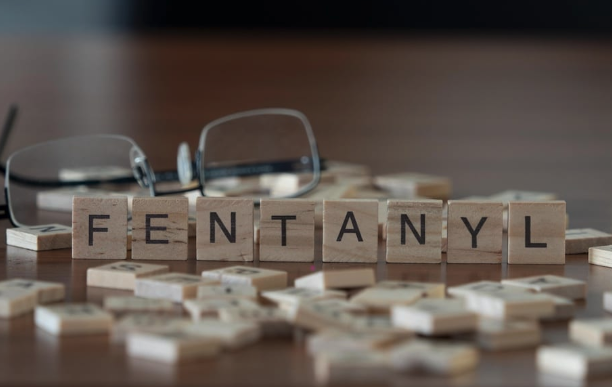Fentanyl has rapidly become one of the most dangerous drugs in the United States. A synthetic opioid that’s up to 50 times stronger than heroin and 100 times stronger than morphine, fentanyl is responsible for a significant and rising number of overdose deaths nationwide. Its potency means that even the smallest amount can be deadly, making awareness, prevention, and safe recovery more critical than ever.
As a Los Angeles-based luxury drug and alcohol rehab center, Regal Treatment works with individuals and families impacted by fentanyl addiction, offering a safe, medically supervised environment to detox and begin the recovery process. But before looking at treatment, it’s important to understand why fentanyl is so dangerous and how people can protect themselves and their loved ones.
Why Fentanyl Is So Dangerous
Extreme Potency
Fentanyl is measured in micrograms, not milligrams. Just two milligrams, or about the size of a few grains of salt, can cause a fatal overdose. This potency makes accidental overdose far more likely, especially when people are unaware they’re taking fentanyl at all.
Hidden in Other Drugs
Many fentanyl overdoses happen because the drug is mixed into other substances without the user’s knowledge. Dealers often cut heroin, cocaine, methamphetamine, and counterfeit prescription pills with fentanyl to increase potency and profits. Even experienced users have no reliable way to detect its presence.
Rapid Onset of Overdose
Because fentanyl acts so quickly, an overdose can occur within minutes. Respiratory depression, which is slowed or stopped breathing, is the primary cause of death. Without immediate intervention, survival chances drop sharply.
Signs and Symptoms of Fentanyl Use
Like other opioids, fentanyl affects the central nervous system, slowing breathing and producing intense euphoria. However, its effects are far more intense and short-lived, which can lead to repeated dosing and rapid dependence.
Physical signs may include:
- Extreme drowsiness or “nodding off”
- Pinpoint pupils
- Confusion or disorientation
- Slowed breathing and heart rate
- Nausea or vomiting
Behavioral signs may include:
- Withdrawing from social activities
- Neglecting responsibilities
- Doctor shopping or buying pills illegally
- Mood swings and irritability
Recognizing an Overdose
Acting quickly during a fentanyl overdose is critical. Signs of overdose include:
- Unresponsiveness or inability to wake up
- Very slow or no breathing
- Pale, cold, or bluish skin, especially on lips and fingertips
- Limp body
- Gurgling or choking sounds
If you suspect an overdose:
- Call 911 immediately
- Administer naloxone (Narcan) if available
- Provide rescue breathing or CPR until help arrives
Naloxone, also known as Narcan, can reverse opioid overdoses, but because fentanyl is so strong, multiple doses may be needed. It can be easily found and is purchasable on Amazon directly.
The Challenges of Fentanyl Withdrawal
Fentanyl addiction develops quickly, and withdrawal can begin within hours of the last dose. Symptoms are often more intense than with other opioids and may include:
- Severe muscle and bone pain
- Nausea, vomiting, and diarrhea
- Insomnia and restlessness
- Intense drug cravings
- Anxiety, depression, and irritability
While fentanyl withdrawal is typically not fatal on its own, it can be overwhelming. Many people relapse simply to stop the discomfort. This is why a medically supervised detox is so important. Healthcare professionals can ease symptoms and keep clients safe.
How Medical Detox Helps
At a Los Angeles-based luxury drug detox and rehab facility like Regal Treatment, fentanyl detox is approached with both safety and compassion. Key elements of a safe fentanyl detox include:
1. Comprehensive Medical Assessment
Before detox begins, a full health evaluation identifies any co-occurring conditions, previous overdose history, and the presence of other substances in the system.
2. 24/7 Medical Supervision
Licensed medical professionals monitor vital signs around the clock to manage complications such as dehydration, dangerously high blood pressure, or rapid heart rate.
3. Medication-Assisted Treatment (MAT)
Medications such as buprenorphine or methadone can reduce withdrawal severity and cravings, increasing comfort and lowering relapse risk during detox.
4. Emotional and Psychological Support
Withdrawal is not just a physical process, but it also can stir up powerful emotions. Early counseling sessions help clients process fear, guilt, or hopelessness while building motivation for recovery.
Life After Detox: The Importance of Continued Treatment
Detox alone is not enough to beat fentanyl addiction. Once the body is free from the drug, the brain is still adjusting, and cravings can remain intense for weeks or even months. A comprehensive recovery plan is critical to staying sober.
Effective post-detox treatment often includes:
- Residential Rehab – Structured, immersive care with daily therapy sessions and peer support
- Dual Diagnosis Treatment – Addressing co-occurring mental health disorders such as depression, anxiety, or PTSD
- Relapse Prevention Training – Learning strategies to avoid triggers and manage cravings
- Holistic Therapies – Activities like yoga, meditation, art, and fitness to rebuild mental and physical health
The Role of Family in Recovery
Family members often play a key role in encouraging treatment and supporting long-term recovery. Education is essential. Understanding the nature of fentanyl addiction helps families respond with empathy rather than judgment. Structured family therapy can also repair damaged relationships and build a stronger support system for life after rehab.
Preventing Fentanyl Overdose in the Community
While treatment is essential for those already addicted, prevention efforts save lives in the community. This includes:
- Education about fentanyl’s risks, especially among young people
- Widespread availability of naloxone (Narcan) and training on its use
- Drug checking services to detect fentanyl in other substances
- Destigmatizing addiction so people feel safe seeking help before it’s too late
A Path Forward
Fentanyl addiction can feel overwhelming, but recovery is absolutely possible with the right care. Medical detox provides the safest first step, and ongoing treatment offers the structure and tools to rebuild a healthy, fulfilling life. Every day, people who once felt hopeless find their footing again through professional treatment and supportive networks.
Breaking free from fentanyl takes courage, commitment, and expert guidance, but it is a fight worth taking on. The stakes are high, but so is the potential for transformation.
Call Regal Treatment today at 818-533-9993 or contact us online to learn more about our facility and addiction treatments for yourself, a loved one, or a friend. We offer free and confidential insurance verification that helps you understand your insurance coverage, and we accept all PPOs and most HMO plans.





